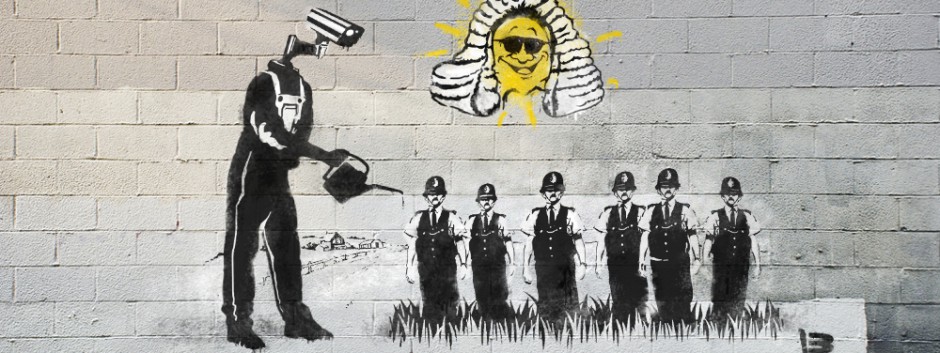Warmup
Writing prompt: Open a new blog post. Think about the way that you detourned your slogans last class. Can acts of activism be fun? What is the role that enjoyment should play in the work that we go through in our daily lives? Why? In what ways is enjoyment stripped from our daily lives?
Film
- Four Horsemen Film & brief discussion. Resources. 102:43.
- How does the film relate to Graeber piece? Discuss student responses to the article, “Bullshit Jobs.”
Jordan, Savio, and Play
- Recall slogans that each person did. We laughed. Go through the Jordan piece and try to find some slogans. Write them out in your packet.
- Did it sound like that Johnson and the thousands of people who took to the streets enjoyed themselves? Discuss Johnson and Mario Sevino; Sevino was inspirational but this is not just about resistance. Largely Jordan talks about play, creativity, and passion.
- Group discussion of Johnson. Discuss 3 powerful acts of direct action that include play, creativity, and strategic resistance. Pick one to share and mark the passage.
- Discuss.
Reflection
- Go back to your blog posts. Write a second part that explains what you learned that you might be able to take with you into your project.
Savio (from Wikipedia)
Early life
Savio was born in New York City to a Sicilian-born Italian-American father who designed and manufactured restaurant equipment. Mario’s mother was also of Italian ancestry, though born in the US, and worked as a retail salesperson. Both his parents were devout Catholics and, as an altar boy, Savio planned to become a priest.[2] He graduated from Martin Van Buren High School in Queens at the top of his class in 1960 and then went to Manhattan College on a full scholarship as well as Queens College.[2]When he finished in 1963, he spent the summer working with a Catholic relief organization in Taxco, Mexico helping to improve the sanitary problems by building facilities in the slums.
His parents had moved to Los Angeles and that autumn he enrolled at University of California, Berkeley.[3] In March the following year he was arrested while demonstrating against the San Francisco Hotel Association for excluding blacks from non-menial jobs. He was charged with trespassing, along with 167 other protesters. While in jail, a cellmate asked if he was heading for Mississippi that summer to help with the Civil Rights project.[2]
Activism
During the summer of 1964, he joined the Freedom Summer projects in Mississippi and was involved in helping African Americans register to vote.[4] He also taught at a freedom school for black children in McComb, Mississippi.[3] In July, Savio, another white civil-rights activist and a black acquaintance were walking down a road in Jackson and were attacked by two men. They filed a police report where the FBI became involved, however, the case stalled until President Lyndon Johnson, who had recently passed the Civil Rights Act, allowed the FBI to look into it as a civil-rights violation.[5] Eventually one of the attackers was found, fined $50 and charged with misdemeanor assault.[2]
When Savio returned to Berkeley after his time in Mississippi, he intended to raise money for SNCC, but found that the university had banned all political activity and fundraising.[4] He told Karlyn Barker in 1964 that it was a question as to whose side one was on. “Are we on the side of the civil rights movement? Or have we gotten back to the comfort and security of Berkeley, California, and can we forget the sharecroppers whom we worked with just a few weeks back? Well, we couldn’t forget.”[6]
Savio’s part in the protest on the Berkeley campus started on October 1, 1964, when former graduate student Jack Weinberg was manning a table for the Congress of Racial Equality (CORE). The University police had just put him into a police car when someone from the surrounding crowd yelled, “Sit down!” Savio, along with others during the 32-hour sit-in, took off his shoes and climbed on top of the car and spoke with words that roused the crowd into frenzy.[3]
The last time he climbed on the police car was to tell the crowd of a short-term understanding that had been met with UC President Clark Kerr. Savio said to the crowd, “I ask you to rise quietly and with dignity and go home”,[7]and the crowd did exactly what he said. After this Savio became the prominent leader of the newly formed Free Speech Movement.[2] Negotiations failed to change the situation; therefore direct action began in Sproul Hall on December 2. There, Savio gave his most famous speech, on the “operation of the machine”, in front of 4,000 people. He and 800 others were arrested that day. In 1967, he was sentenced to 120 days at Santa Rita Jail. He told reporters that “[he] would do it again”.[2]
In April 1965, he quit the FSM because “he was disappointed with the growing gap between the leadership of the FSM … and the students themselves.”[8]



